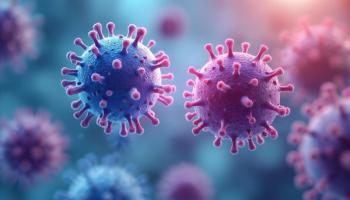
Macrophages Surrounding Lymph Nodes Protect Against Melanoma, Other Cancers
Subcapsular sinus macrophages may influence cancer mortality.
Subcapsular sinus (SCS) macrophages that surround lymph nodes were found to block the progression of melanoma and other cancers in animal models, a study in Science found.
To prevent the entry of tiny structures that transport pieces of tumor tissue to aid the spread and growth of cancer, SCS macrophages form a protective coating around the lymph nodes. However, as the tumor progresses, with the effect of some cancer drugs, the SCS barrier starts to break down.
“Macrophages found within tumors are typically seen as promoting cancer growth, for example, by helping form new blood vessels which deliver nutrients to tumor cells,” said lead study author Mikael Pittet, PhD. “My lab studies how tumors communicate with the immune system in the entire body, and we became particularly interested in knowing whether tumors also interact with macrophages that reside away from the tumor.”
Tumor-derived extracellular vesicles (tEVs) are tiny membrane-bound compartments that bind to different cell types to activate them. By measuring tEV levels, scientists could predict both treatment response and survival.
However, testing the impact of tEVs in living animals has proven to be difficult, so researchers decided to combine genetic and imaging approaches in a new way that helps track tEVs and their targets.
During the study, researchers used mice with tumor cells that were genetically modified to produce tEVs with light-emitting markers. This strategy allowed researchers to confirm that tEVs have the ability to exit the tumor and travel throughout the body. Additionally, they were found to be the most highly concentrated in nearby lymph nodes.
In a different mouse group with melanomas that carried different reporter proteins, the tEVs were found to primarily interact with the SCS macrophages, resulting in a layer being formed directly inside the fibrous capsule that surrounds the lymph nodes.
Researchers then sought to determine if the mice study results were relevant in humans. Thirteen melanoma patients with cancer-free sentinel lymph nodes were examined.
The lymph nodes themselves were found to be melanoma-free, but in 90% of patients there were melanoma-derived material found in the SCS macrophages that surrounded the nodes. The presence of the material did not reflect the primary tumor’s progression.
Additional experiments on 2 mouse models of melanoma and 1 lung cancer model revealed that SCS macrophages act as tumor suppressors. This showed a significant difference to macrophages that are found within tumors and normally promote cancer growth.
Data from the current study showed that SCS macrophages is able to suppress cancer by limiting the spread of tEVs, causing the density of the macrophages that surround the lymph nodes to begin decreasing as the tumors grow. Furthermore, chemotherapy and immunotherapy drugs appeared to disrupt the SCS macrophage barrier.
“Since there currently is interest in developing therapies that deplete tumor-promoting macrophages within tumors, it could be useful to determine whether these treatments also affect protective SCS macrophages,” Pittet said. “The best outcome would probably be getting rid of the tumor-promoting activities of macrophages within tumors while preserving the tumor-suppressing activities of SCS macrophages. It also would be useful to determine whether SCS macrophages can be strengthened to prevent delivery of tEVs into the lymph nodes and to better understand how tEV-activated B cells promote cancer growth.”
Newsletter
Stay informed on drug updates, treatment guidelines, and pharmacy practice trends—subscribe to Pharmacy Times for weekly clinical insights.


















































































































































































































